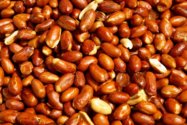Red Kidney Beans

©icon0.com
Red Kidney Beans review: 79 facts and highlights
Why is Red Kidney Beans better than the average?
- Potassium per 100g?
1359 mgvs1133.38 mg - Glycemic index (GI)?
20vs24.74 - Phosphorus per 100g?
406 mgvs373.19 mg - Saturated fatty acids per 100g?
0.15 gvs0.65 g - Carbohydrates per 100g?
61.29 gvs51.8 g - Iron per 100g?
6.69 mgvs6.34 mg - Vitamin C per 100g?
4.5 mgvs3.31 mg - Vitamin B6 per 100g?
0.4 mgvs0.34 mg
Which are the most popular comparisons?
General values
22.53 g
15.2 g
1408 kJ
337 kcal
0.01 mg
Unknown. Help us by suggesting a value.
Sugars
61.29 g
Unknown. Help us by suggesting a value.
Unknown. Help us by suggesting a value.
Unknown. Help us by suggesting a value.
Unknown. Help us by suggesting a value.
Unknown. Help us by suggesting a value.
Unknown. Help us by suggesting a value.
Minerals
1359 mg
0.7 mg
83 mg
6.69 mg
138 mg
406 mg
2.79 mg
1.11 mg
3.2 µg
Vitamins
4.5 mg
0.4 mg
2.11 mg
0.21 mg
0.78 mg
394 µg
0.61 mg
Unknown. Help us by suggesting a value.
Unknown. Help us by suggesting a value.
Amino acids
0.99 g
1.8 g
1.55 g
0.34 g
1.4 g
0.95 g
0.27 g
0.63 g
0.24 g
Antioxidants
Unknown. Help us by suggesting a value.
0.01 mg
Unknown. Help us by suggesting a value.
Unknown. Help us by suggesting a value.
Unknown. Help us by suggesting a value.




















